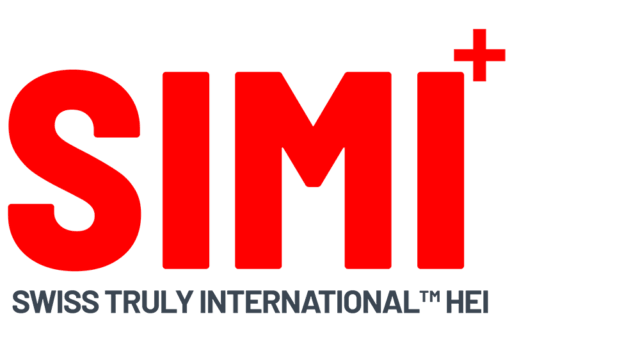ST0548Supply chain leadership professional
Standards
SUPPLY CHAIN LEADERSHIP PROFESSIONALOccupation summary
Supply chain leadership professionals are responsible for procuring, producing, moving, and delivering products or services from suppliers to customers or end-users, regardless of location. They play a critical role in integrating the functions and processes of customers, distributors, manufacturers, partners, regulators, sub-suppliers, and suppliers across companies, cities, towns, and countries, forming an efficient and effective end-to-end supply chain. These professionals are adept at both global and domestic operations, capable of leading effectively, facilitating trade, and executing supply chains successfully. To achieve this, they collaborate effectively with organizations and individuals, leveraging information and resources to ensure optimal outcomes.
Main Duties and Tasks: The role encompasses all mission-critical business activities, including finance, HR, IT, marketing, and sales, with the primary goals of driving company growth, increasing market share, and generating revenue and profit. Key duties involve organizing a company’s supply chain network across the essential operational functions: plan, source, make, deliver, return, and enable. Every task is focused on adding value to the customer and the end-to-end supply chain.
Types of Assignments Undertaken: These vary based on geography, business size, industry, timelines, products, systems, and legislative requirements. Typical assignments include:
- Achieving marketing advantage through superior logistics
- Designing and implementing solutions for sourcing and delivering materials to production facilities or finished products to consumers
- Exploring multi-modal transport and cost-effective storage solutions
- Deciding on investments in research and knowledge exchange to improve supply chain continuity
- Optimizing supply chain assets through continuous improvement
- Planning, building, and utilizing IT infrastructures to bring new products and services to market
- Managing relationships with suppliers, intermediaries, third-party service providers, and customers
Typical Job Titles: Supply Chain Executive, Supply Chain Management Lead, Chief Supply Chain Officer, Demand Planner. This role exists across public, private, and charitable sectors and in organizations of all sizes. Typically, it reports to, or is a member of, a company’s main executive board, commercial, operational, or supply chain director, with responsibilities that may include geographic oversight, team management, business unit leadership, and budget management.
MAPPEDSupply chain leadership professional
Standards
SUPPLY CHAIN LEADERSHIP PROFESSIONALKnowledge
- the principles of inventory, supply and demand planning and associated metrics, such as on-time, in-full, error-free and on-shelf availability
- methods of forecasting including effects of fluctuations and seasonality and use of scheduling techniques
- the value of targeted research on supply chain dynamics
- the principles of supply chain strategies, delivery models and modes and their impact on business performance
- how the value proposition of the product and the market affects supply chain strategies and service operations for the end customer
- how to use contemporary market, product and supply chain ideas to flex the supply chain network design
- the specifics of budgeting, profit and loss reporting and cash flow forecasting in complex supply chains
- how procurement processes impact across the supply-chain to ensure cost efficiencies, security of supply, continuity of service and mitigation of risk
- the range of sourcing strategies for managing cost, quality, service and time across supply chain networks
- value chain, end-to-end and multi-channel supply chain trends in cross-border sourcing
- options for different inventory channels to markets, factoring in constraints, cost, flexibility, quality and speed
- the different commercial, environmental, ethical and social contexts of manufacturing, storing, distributing and selling across an extended supply chain
- the optimal supplier to customer supply chain structures
- the value of alternative solutions that impact positively on time and cost, on end users and all parts of the supply chain
- the ethical, environmental, political, social, economic, technological and legal implications of operating in a supply chain life-cycle
- the nature and scope of technologies that can drive supply chain behaviour including virtual networks
- where to leverage investment, and seek specialist advice, in supply chain technology
- the worth of modelling and simulation as a key enabling tool when applied to supply chain management problems
- the impact of national and international policy frameworks and legislation including employment, health and safety, security, environment, quality, common transport policy, tariff and taxes, trading protocols, customs classification, contracts and insurance
- the importance of tracking and recycling and e-commerce practices
- the value of asset recovery and related costs
- the 7 “R’s” of sustainability
- the requirements for supply chain and network change using contemporary supply chain thinking
- the concepts of supply chain network coordination and leadership and their application to practice
- how supply chain visibility and brand appeal can be raised by harnessing knowledge exchange
SUPPLY CHAIN LEADERSHIP PROFESSIONALSkills
- determine benefits of insourcing, offshoring or outsourcing
- gather, analyse, interpret and use data from across the supply chain to propose and make effective decisions
- source and plan optimal transport solutions
- actively integrate and use data across enterprise lines
- develop differentiated supply chain strategies aligned to relevant business unit or function to achieve long-term sustainable growth
- use end customer insight to design and evaluate end-to-end supply chain networks
- use current market and product information to influence and challenge supply chain network design
- leverage, and capitalise on, supply chain assets to deliver financial targets
- drive cost efficiencies and service level improvements through the distribution network
- practise in a sustainable and ethical way all sourcing and buying decisions
- control information and material flow on-time and in-full
- apply relevant inventory control techniques and tools
- articulate ways to minimise costs and deploy Lean principles while optimising service
- introduce strategies for managing inventory optimisation and rationalisation across the extended supply chain
- implement change in the supply chain in response to changes in production, scheduling and demand
- collaborate with manufacturing functions to meet criteria of quality, time and continuity
- manage distribution and logistics networks, inbound and outbound
- evolve alternative supply chains to ensure resilience and continuity of supply
- design activities for receiving, put-away, storage, replenish, order-picking and dispatch
- identify next-generation software and manage potentially disruptive technologies
- match innovation in IT with business needs including global sourcing and the international trade context
- meet the challenge of technology selection, development, implementation and application
- give guidance on meeting environmental and legal requirements and maintain a high regard for risk identification and reduction, and safety management
- articulate business purpose and values and establish key accountabilities for contract formation and negotiation
- introduce innovative distribution, delivery and return methods while managing risk
- implement the 7 “R’s” of sustainability: remove, reduce, reuse, renew, recycle, revenue and read
- maintain the competitiveness of the supply chain
- agree, communicate, collaborate and coordinate supply chain and network imperatives with finance, HR, IT, sales and marketing functions and with key partners
- initiate value-adding strategic and operational processes through effective project and task management
SUPPLY CHAIN LEADERSHIP PROFESSIONALBehaviors
- be flexible to changing business requirements with a desire for achieving supply chain optimisation
- Adopt cross-functional/cross-company working to enhance supply chain connections and dependencies
- promote an inclusive approach to a safety-first culture in the workplace and across all tasks in the supply chain
- champion new opportunities for business growth and proactively reduce the supply chain related risks
- be a persuasive negotiator and approachable by all partners and stakeholders in the end to end supply chain
- be an ethical role model with a reputation for sustainable development in a global supply chain community
APPLIEDPrograms mapped with
Supply chain leadership professional Standards
Off-campus
Full-online
FEDERAL STATUSBecome Swiss University 2027

SIMI Swiss is actively preparing to seek accreditation from the Swiss Agency of Accreditation and Quality Assurance (AAQ), which is approved by the Swiss Accreditation Council (SAC), by 2027.

FEDERAL STATUSBecome Swiss University 2027
SIMI Swiss is actively preparing to seek accreditation from the Swiss Agency of Accreditation and Quality Assurance (AAQ), which is approved by the Swiss Accreditation Council (SAC), by 2027.




